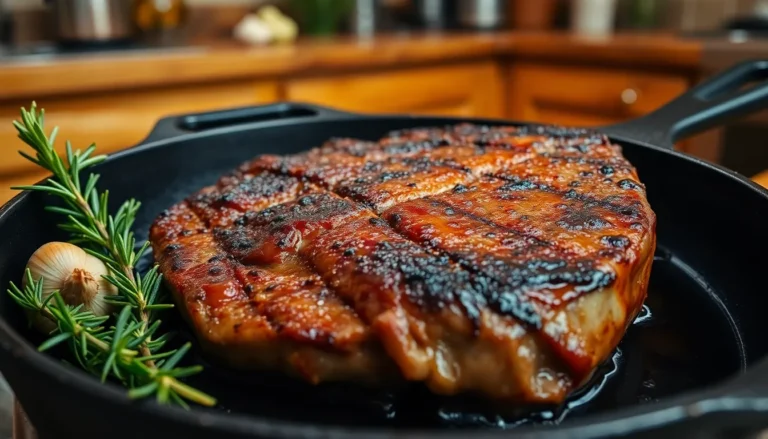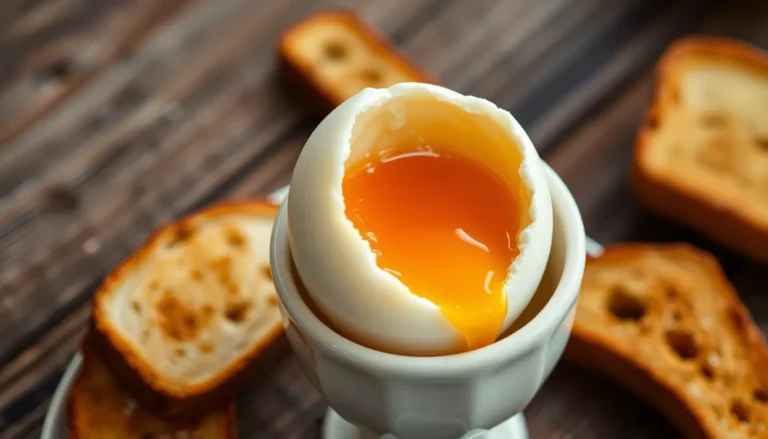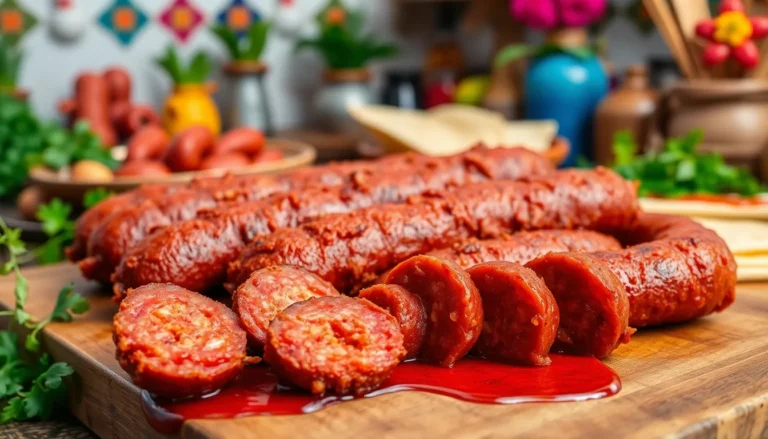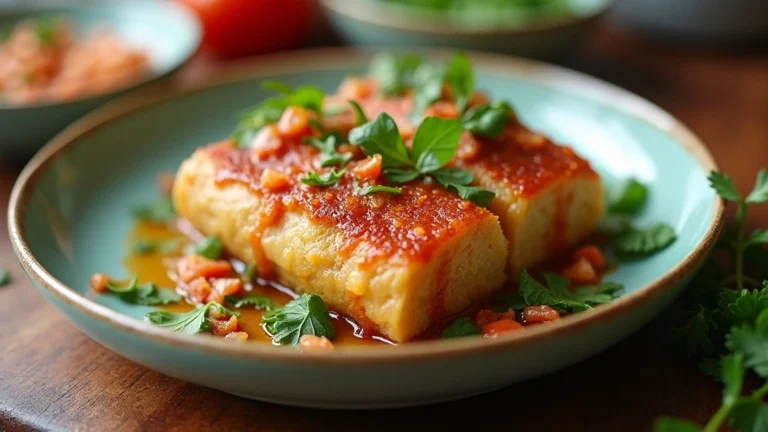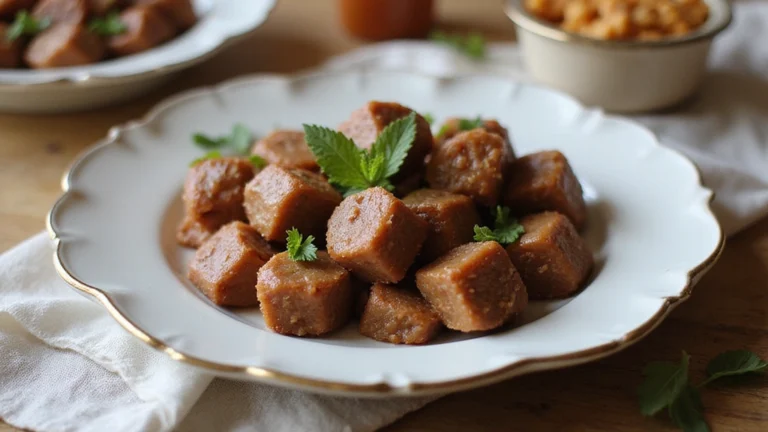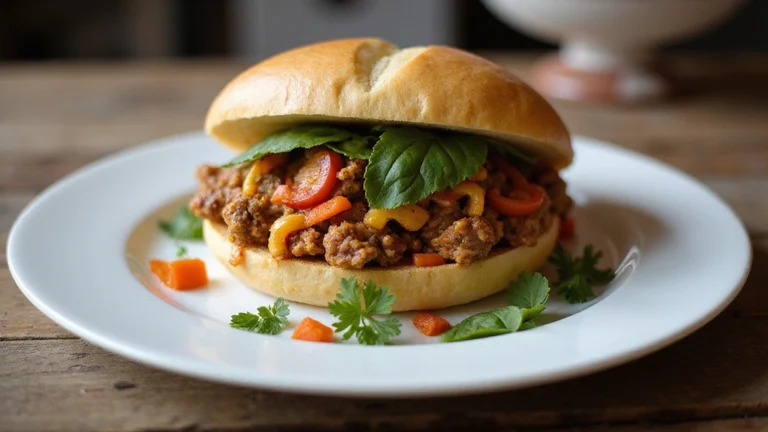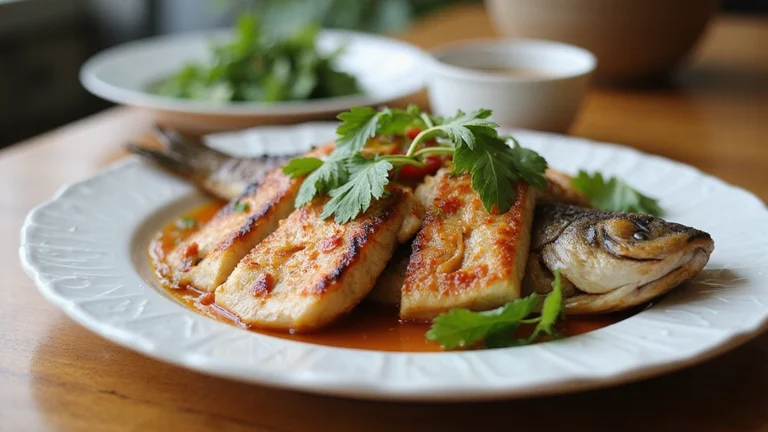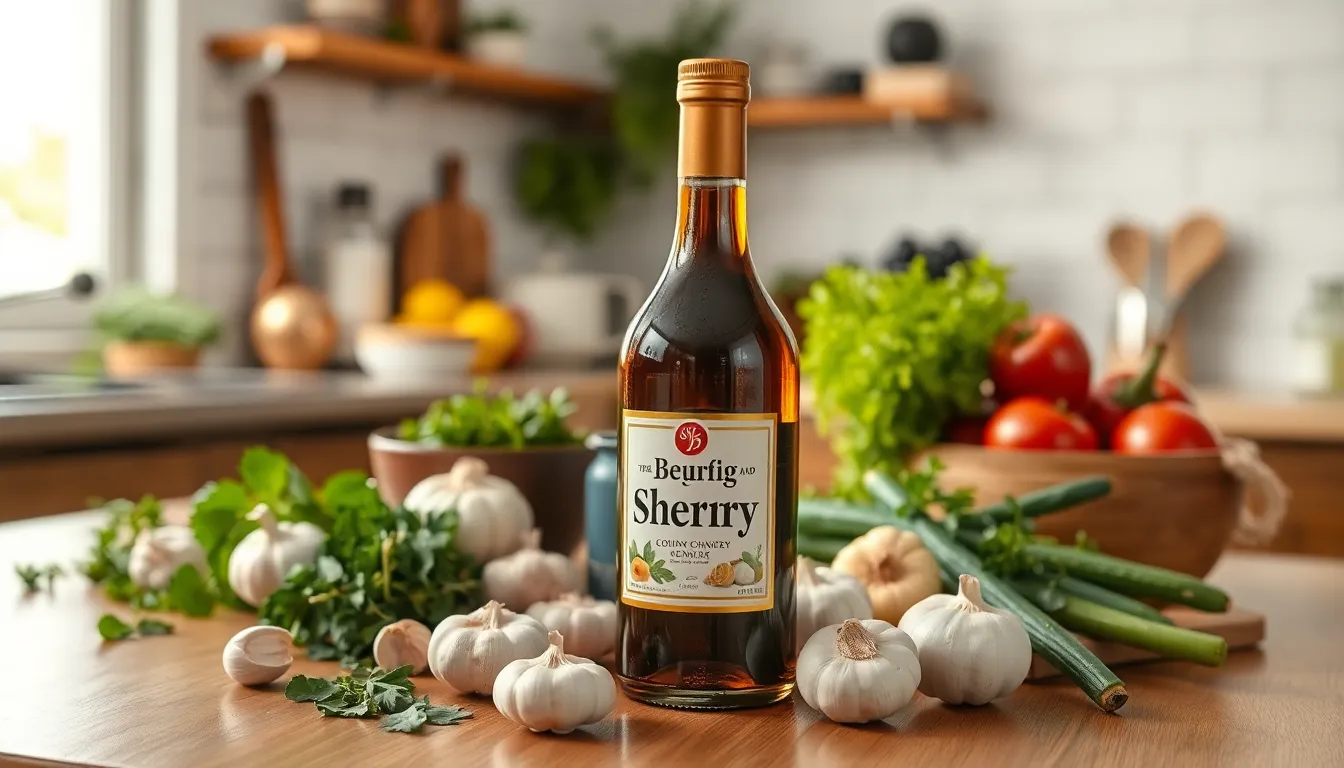
Ever wondered what cooking sherry is and why it appears in so many recipes? This fortified wine adds rich, complex flavors to your dishes but often leaves home cooks confused about its purpose and whether they need a special trip to the liquor store.
Cooking sherry is essentially sherry wine with added salt and preservatives, specifically formulated for culinary use. Unlike drinking sherry, it’s designed to withstand high temperatures while infusing your sauces, soups, and marinades with its distinctive nutty, slightly sweet profile. You’ll typically find it in the condiment aisle rather than with alcoholic beverages, making it accessible even in stores that don’t sell alcohol.
What Is Cooking Sherry?
Cooking sherry is a fortified wine specifically formulated for culinary applications rather than drinking. It’s characterized by its salt content and preservatives that extend its shelf life and enhance its cooking properties.
Origins and Production Process
Cooking sherry originated in Spain, where sherry wine has been produced for centuries in the region of Jerez. The production process begins with standard sherry wine, typically made from Palomino grapes that undergo fermentation and aging in a system called solera. This traditional method involves blending wines of different ages to maintain consistency. For cooking purposes, producers add approximately 2% salt along with preservatives like potassium sorbate and potassium metabisulfite. These additions prevent spoilage and extend shelf life significantly, making cooking sherry a practical pantry staple. The fortification process also involves adding brandy or a neutral spirit to increase the alcohol content, typically ranging from 15-17%.
Differences Between Cooking Sherry and Drinking Sherry
Cooking sherry contains salt and preservatives not found in drinking sherry, making it unsuitable for consumption as a beverage. The salt content in cooking sherry ranges from 1.5% to 3%, providing seasoning to dishes while acting as a preservative. Drinking sherry offers more complex flavors, coming in varieties like fino, amontillado, oloroso, and cream sherry—each with distinct taste profiles developed through specialized aging techniques. Price points also differ significantly; cooking sherry costs $3-$5 per bottle and is found in grocery store condiment aisles, while quality drinking sherries start at $15-$20 and are sold in liquor stores or wine shops. Packaging reflects these differences, with cooking sherry typically sold in bottles similar to vinegar or cooking wine, often featuring recipes on the label.
Flavor Profile and Alcohol Content
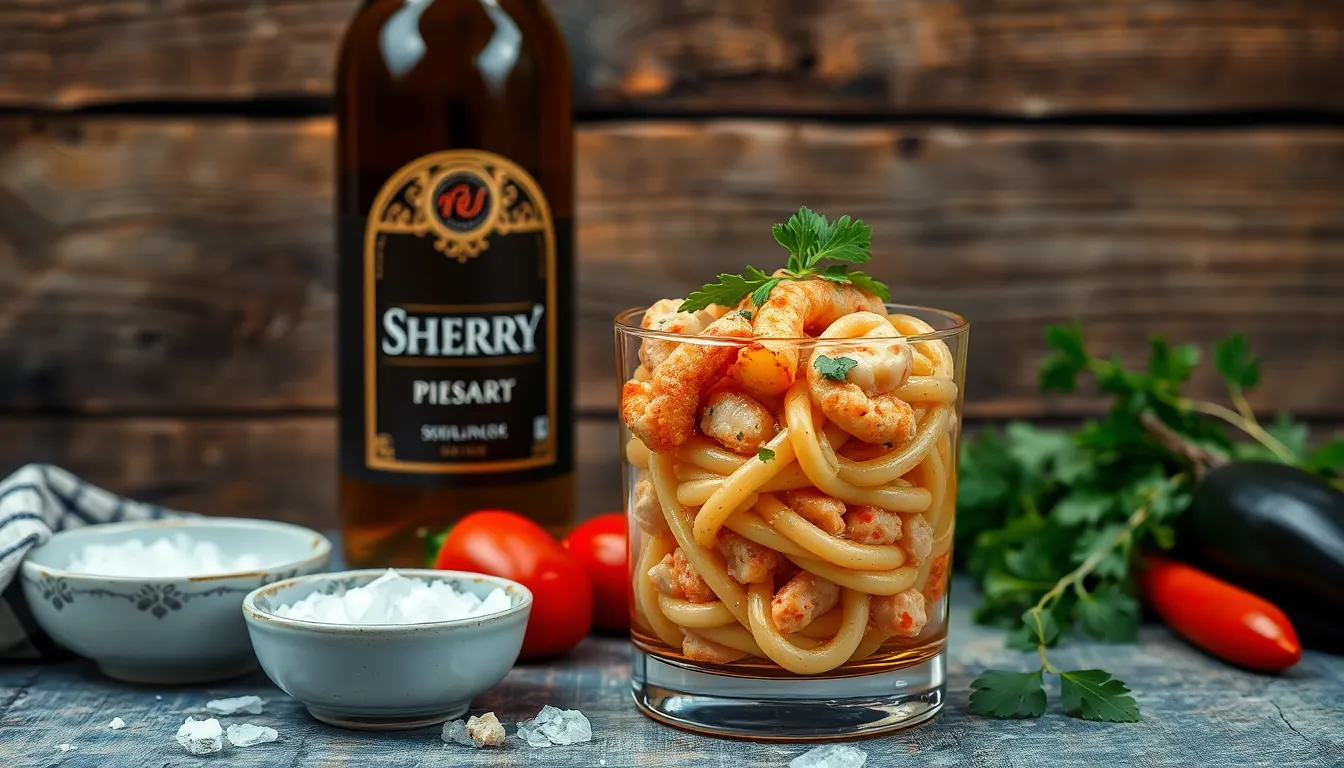
Cooking sherry delivers a complex flavor spectrum that varies by type, improving dishes with distinctive taste notes. Dry varieties like Fino and Manzanilla offer light, nutty flavors with almond undertones and a crisp, refreshing finish. Manzanilla specifically brings a salty, tangy character with floral aromatics that pairs exceptionally well with seafood dishes and light sauces.
Medium and Oloroso sherries provide fuller-bodied experiences with rich walnut, hazelnut, caramel, and dried fruit flavors. These deeper profiles add substantial complexity to heartier dishes like stews and roasted meats. For desserts, sweet varieties such as Pedro Ximenez deliver intense sweetness that transforms cakes and puddings with their concentrated flavor.
Cooking sherry contains approximately 17% alcohol by volume (ABV), comparable to port wine. This alcohol content means it can be intoxicating if consumed directly in large quantities. During cooking, but, the alcohol evaporates gradually—taking up to three hours to dissipate completely—while the concentrated flavors remain to enrich your dish.
Unlike drinking sherry, cooking versions contain additional ingredients for extended shelf stability. Salt, water, malic acid, and preservatives are commonly added to increase longevity once opened. These additives ensure your cooking sherry remains usable in your pantry longer than traditional drinking sherry would.
The salt content in cooking sherry serves a dual purpose by both preserving the liquid and improving the savory aspects of dishes. This salty character makes it particularly effective in marinades and pan deglazing, where it helps release flavorful fond from cooking surfaces while adding its own distinctive taste elements.
Common Uses in Cooking
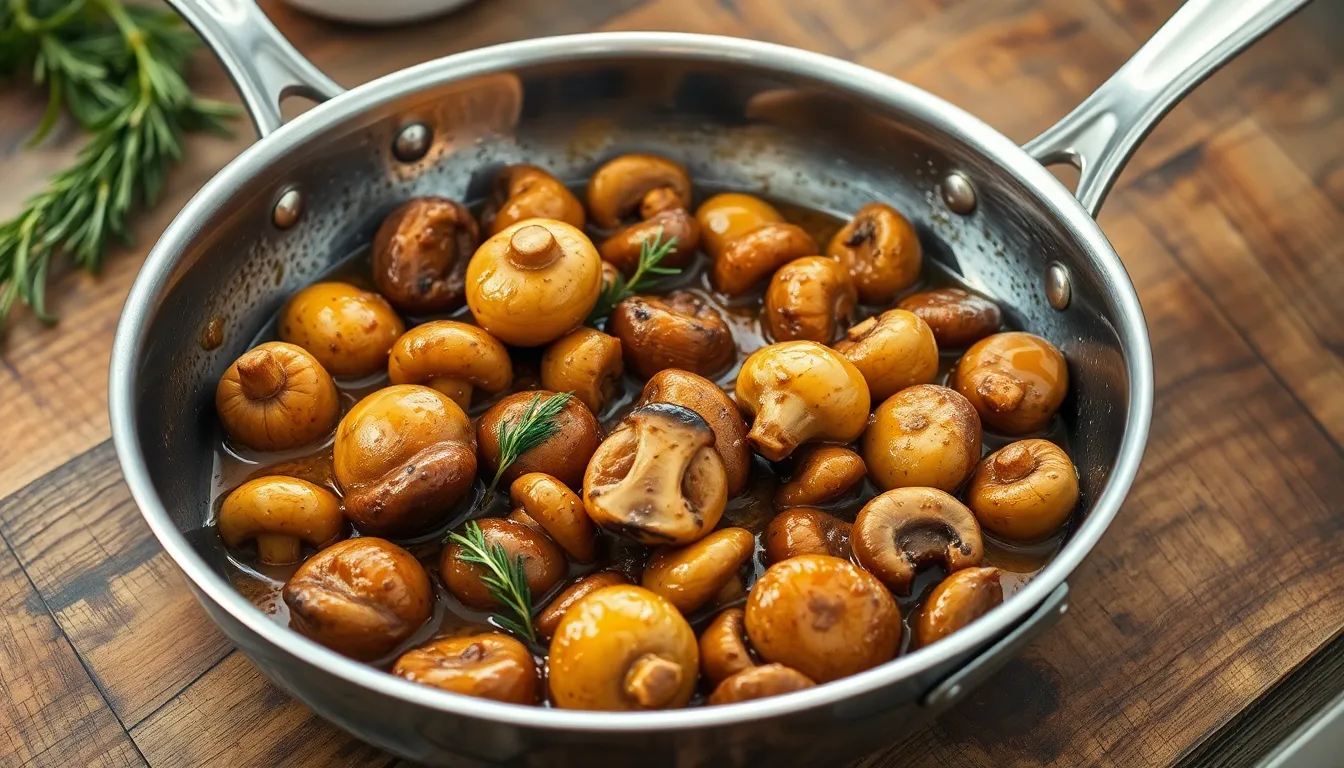
Cooking sherry transforms everyday dishes with its distinctive nutty, sweet flavor profile. This versatile cooking wine enhances many preparations across various cuisines, adding depth and complexity to your culinary creations.
Popular Dishes That Use Cooking Sherry
Sherry mushrooms stand as a classic application, where the wine’s nutty notes perfectly complement earthy mushrooms. This dish typically combines sautéed mushrooms with onions and herbs like rosemary and thyme, with cooking sherry creating a rich, flavorful sauce once reduced. Turkey gravy gains remarkable depth when cooking sherry is incorporated with drippings, vegetables, flour, and stock—making it a Thanksgiving favorite that elevates the entire meal.
Seafood dishes benefit tremendously from cooking sherry’s complex profile. The wine adds brightness to scallops, shrimp, and white fish preparations. Poultry recipes, particularly chicken and turkey, develop enhanced flavor dimensions when cooked with sherry. Pork dishes like tenderloin or chops acquire subtle sweetness and complexity when glazed or marinated with this cooking wine.
Cooking sherry excels in pan deglazing, where it releases flavor-packed fond from the cooking surface to create instant sauces. Marinades featuring cooking sherry effectively tenderize meats while infusing them with its characteristic flavor. Gravies develop remarkable depth and nuance with just a small amount added during preparation.
Substituting Cooking Sherry in Recipes
Dry vermouth offers an excellent alternative when cooking sherry isn’t available, providing similar flavor complexity. Madeira, Marsala, and Port work as viable substitutions, though each brings unique characteristics to the final dish. White wine (dry or sweet, depending on your recipe) creates a suitable replacement, though it lacks some of cooking sherry’s distinctive nuttiness.
Non-alcoholic options include grape juice, which mimics the sweetness without the alcohol content. A combination of beef stock with tomato paste can replicate cooking sherry’s depth and complexity in savory applications. For recipes needing acidity, sherry vinegar or apple cider vinegar can substitute in limited quantities, though they lack the sweetness of cooking sherry.
When making substitutions, consider your recipe’s sweetness requirements and adjust accordingly. Remember that cooking sherry contains salt, so reduce additional salt when using it directly and add salt as needed when using unsalted alternatives. The right substitution depends on your exact dish—consider whether the recipe needs sweetness, acidity, or depth when selecting your replacement.
Buying Guide: Where to Find Cooking Sherry
Cooking sherry is widely available in most supermarkets, typically stocked in the condiment aisle rather than with alcoholic beverages. Major grocery chains organize cooking sherry alongside vinegars, cooking wines, and other liquid seasonings for culinary convenience.
Brands like Holland House offer cooking sherry made from specially selected grapes with a distinctive roasted sweet flavor specifically formulated for cooking purposes. These products come packaged in plastic or glass bottles, frequently labeled as “cooking wine” to distinguish them from drinking varieties.
When selecting cooking sherry, check the nutritional information panel since it contains important sodium levels—approximately 190mg per 2 tablespoons due to its salt preservation. Cooking sherry prices range from $3-$5 per bottle, making it an affordable pantry staple compared to drinking sherries that start at $15-$20.
Some specialty food stores and gourmet markets carry premium cooking sherries with more complex flavor profiles, though these remain distinct from drinking-quality sherries found exclusively in liquor stores. Online retailers like Amazon and specialty cooking websites also stock various cooking sherry options, often providing customer reviews to help guide your selection.
Many cooking sherry bottles feature recipe suggestions on their labels, offering inspiration for incorporating this ingredient into your cooking repertoire. The packaging typically resembles other cooking wines rather than traditional wine bottles, making it easy to identify in the store’s condiment section.
Storage and Shelf Life
Cooking sherry’s shelf life varies significantly depending on whether it’s opened or unopened. Unopened bottles can last between 1-5 years when stored properly, with dry varieties like Fino or Manzanilla typically lasting 2-3 years and richer styles such as Oloroso remaining good for up to 5 years. Store these bottles in a cool, dark location away from direct sunlight and heat to maintain their quality.
Once opened, cooking sherry’s lifespan decreases considerably. You’ll get the best flavor by using regular dry sherries within 1 month after opening, while cooking sherry with added preservatives can last from a few months up to a year. Different sherry varieties have exact timeframes for optimal use after opening:
- Fino or Manzanilla: approximately 1 week when refrigerated
- Amontillado and Medium Sweet varieties: 2-3 weeks
- Oloroso and Cream styles: 4-6 weeks or longer
Proper storage techniques extend cooking sherry’s usability. Always seal opened bottles tightly with the original cork or stopper and store them in the refrigerator to slow oxidation and preserve flavor. The refrigeration process is crucial for maintaining the complex flavor profile that makes cooking sherry valuable in recipes.
Quality assessment remains straightforward with cooking sherry. Check for spoilage by smelling or tasting a small amount before using in recipes. Discard the sherry if it smells or tastes sour, bitter, or vinegary, as these are clear indicators it has spoiled. The added salt in cooking sherry helps extend its shelf life but doesn’t make it immune to eventual degradation.
Health Considerations and Salt Content
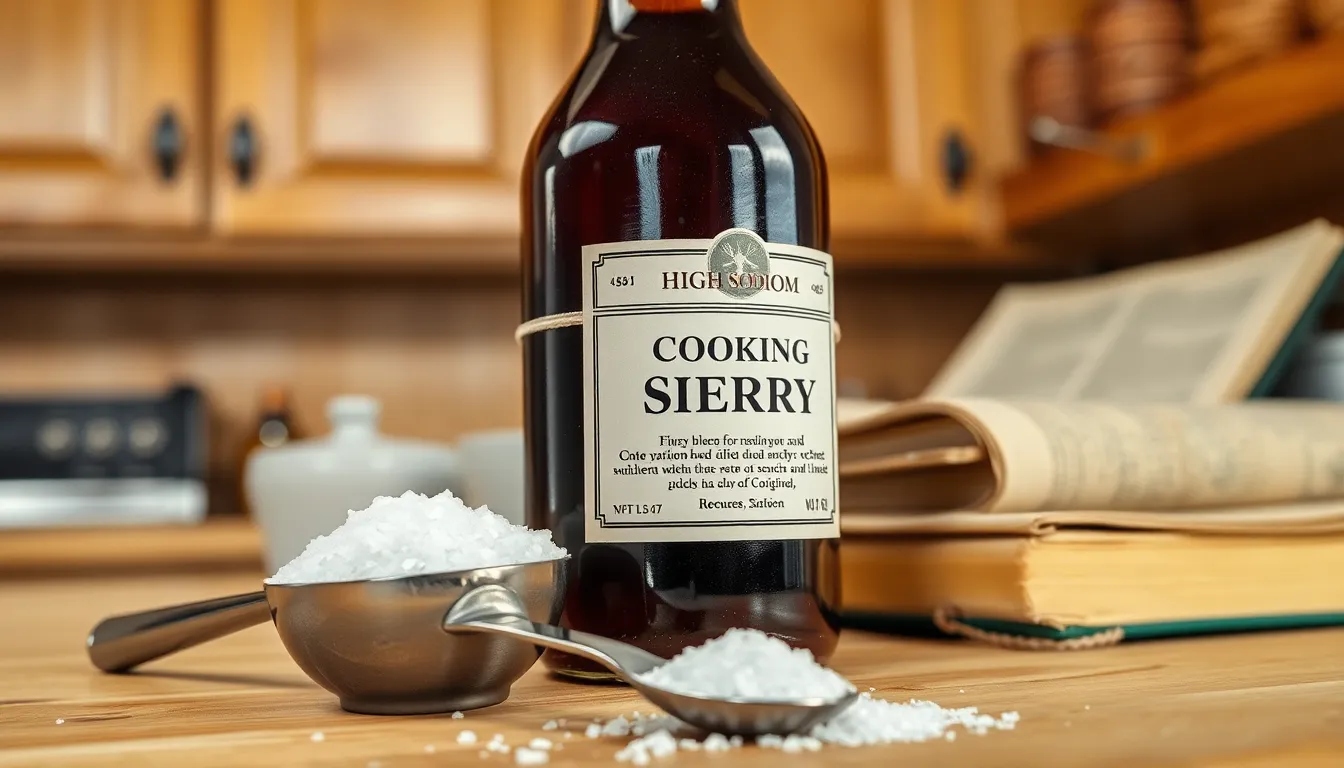
Cooking sherry contains important health risks due to its high alcohol content ranging from 12-17%, which exceeds most table wines. Regular consumption can lead to serious health complications including alcohol poisoning, heart disease, and stroke. Those with alcohol dependency issues face additional risks, as cooking sherry may worsen or trigger addiction even though its unpleasant taste.
The salt content in cooking sherry presents another major health concern. Manufacturers add salt primarily as a preservative to extend shelf life, but this results in extremely high sodium levels—approximately 4,600 milligrams per bottle. This excessive sodium creates substantial cardiovascular strain and can damage your kidneys when consumed regularly.
Salt’s dual purpose in cooking sherry is both practical and preventative. It functions effectively as a preservative, allowing you to store the product longer than regular wine. The high salt content also makes cooking sherry remarkably unpalatable as a beverage, serving as a deterrent to drinking it straight. Even though this intentional unpleasantness, some individuals still consume cooking sherry for its intoxicating effects, disregarding the severe health consequences.
When using cooking sherry in your recipes, remember to adjust other salt-containing ingredients accordingly. The concentrated sodium levels will significantly impact your dish’s overall salt profile, potentially making food too salty if you don’t compensate by reducing salt elsewhere in the recipe.
Conclusion
Cooking sherry stands as a versatile kitchen ingredient that transforms ordinary dishes into culinary masterpieces with its complex flavor profile. You’ll find it’s an affordable staple that delivers exceptional value even though its modest price point.
While it’s not suitable for drinking like its premium counterparts you’ll appreciate how it enhances your cooking repertoire from marinades to sauces. Its extended shelf life makes it a practical addition to your pantry staples.
Remember to store your cooking sherry properly after opening and be mindful of its salt content when adding to recipes. Whether you’re deglazing a pan sautéing mushrooms or preparing seafood dishes cooking sherry deserves a permanent spot in your culinary toolkit.
Frequently Asked Questions
What is cooking sherry?
Cooking sherry is a fortified wine specifically formulated for culinary use rather than drinking. It contains added salt (about 2%) and preservatives that extend its shelf life and enhance its cooking properties. Unlike drinking sherry, cooking sherry can withstand high temperatures while adding rich, complex flavors to various dishes.
Where can I find cooking sherry in the grocery store?
Cooking sherry is typically located in the condiment aisle of most supermarkets, alongside vinegars and other cooking wines. It’s not usually found in the alcohol section. Brands like Holland House are commonly available, with prices ranging from $3-$5 per bottle.
How long does cooking sherry last?
Unopened cooking sherry can last between 1-5 years depending on the variety. Once opened, its shelf life decreases significantly. To maximize freshness, seal opened bottles tightly and store them in the refrigerator. Discard cooking sherry if it smells or tastes sour, bitter, or vinegary.
What can I substitute for cooking sherry?
Good substitutes include dry vermouth, Madeira, Marsala, Port, or white wine. For non-alcoholic options, try grape juice or beef stock with tomato paste. When substituting, consider the sweetness and acidity needed in your recipe and adjust salt levels accordingly, as cooking sherry contains significant sodium.
What dishes can I use cooking sherry in?
Cooking sherry works well in a variety of dishes including sherry mushrooms, turkey gravy, and seafood recipes. It’s excellent for pan deglazing, creating flavorful sauces, and in marinades where it adds depth and helps tenderize meats. Its distinctive nutty and sweet flavor transforms everyday meals into more complex dishes.
What is the alcohol content of cooking sherry?
Cooking sherry typically contains about 17% alcohol by volume (ABV). During cooking, most of this alcohol evaporates, leaving behind concentrated flavors. The alcohol content is higher than regular wine due to the addition of brandy or neutral spirits during production.
Is cooking sherry the same as drinking sherry?
No, they’re different products. Cooking sherry contains added salt and preservatives that make it unsuitable for drinking. While cooking sherry costs $3-$5 and is found in grocery stores, drinking sherries start at $15-$20, are sold in liquor stores, and have distinct taste profiles developed through specialized aging techniques.
Are there health concerns with cooking sherry?
Cooking sherry has high alcohol content (12-17%) and significant sodium levels (about 4,600mg per bottle). While the alcohol mostly evaporates during cooking, the sodium remains. When using cooking sherry, adjust other salt-containing ingredients in your recipe to maintain balanced flavors and avoid excessive sodium intake.
